

“There is one masterpiece, the hexagonal cell, that touches perfection. No living creature, not even man, has achieved, in the center of his sphere, what the bee has achieved in her own: and were some one from another world to descend and ask of the earth the most perfect creation of the logic of life, we should needs have to offer the humble comb of honey.” — Maurice Maeterlinck, The Life of the Bee, 1924.
What is the most important animal to humans? In prehistoric times, the dog helped transform early hunter-gatherers into apex predators. Later, human civilization was built on the backs of horses. But starting around 11,500 years ago, when humans began making permanent settlements and invented agriculture, bees emerged as the most critical animal to human survival.

By pollinating crops around the world, honeybees feed more than 7 billion people today. Most of the food that we eat (and all of our cotton) is produced in part by the hard work of bees. In her 2011 book The Beekeeper’s Lament, journalist Hannah Nordhaus described honeybees as “the glue that holds our agricultural system together.”
The importance of bees isn’t limited to humans, of course. By promoting the reproduction of angiosperms or flowering plants, bees are also central to survival of countless other animal species that rely on those plants and their fruits to survive. In fact, Earth’s entire planetary ecology has been shaped by bees. Since they first evolved from wasps some 100 million years ago, bees have driven the evolution of plant life.
Sadly, in recent times, we have not treated our bee friends well. The use of pesticides—neonicotinoids in particular, which are commonly used on corn, soybean, canola and cereal, as well as many fruits and vegetables—have killed an estimated 250 million bees in a just a few years. Applied to plants, neonics travel through the plant’s vascular system and appear in roots, pollen and nectar that then are transferred to bees and their colonies, as well as other untargeted and vulnerable species, from earthworms to birds and even bats.
In a 2012 interview, conservation biologist and bee expert Dr. Reese Halter, host of the PBS Nature television series “Dr. Reese’s Planet,” said, “The bees are trying to tell us something very clearly. The way we are operating … isn’t working. We’ve lost a quarter of a trillion honeybees, which have died prematurely in the last four years.” This dramatic decline of the bee population has been ascribed to Colony Collapse Disorder (CCD), a combination of deadly effects, including pathogens, parasites and pesticides that have been decimating beehives since at least 2006.
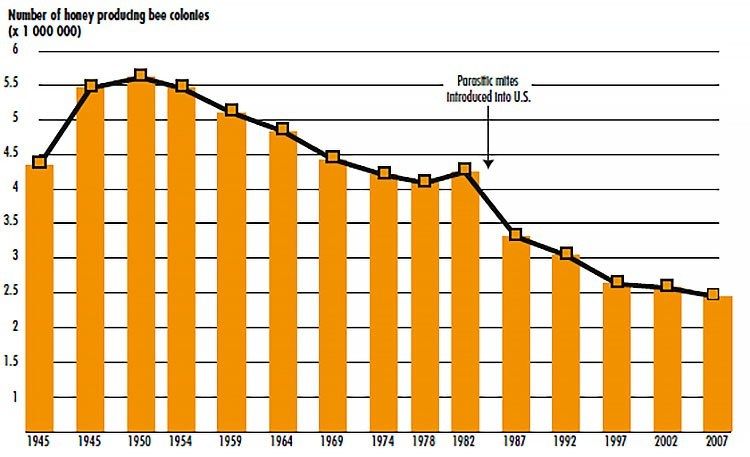
Last month, the Bee Informed Partnership, an academic non-profit supported by the U.S. Department of Agriculture and the National Institute of Food and Agriculture, released the results of its annual survey of more than 6,000 American beekeepers. They found that northern beekeepers lost almost half (48 percent) of their managed colonies between April 2014 and April 2015. Southern beekeepers lost 37 percent of their colonies over the same period.
Killing bees, Killing Ourselves
A growing body of scientific evidence has pointed to one of the culprits of bee deaths: a nicotine-based class of pesticides known as neonicotinoids, also called neonics. In January, an international multidisciplinary team of 30 scientists, the Task Force on Systemic Pesticides, reviewed 1,121 peer-reviewed papers published over the past five years, including those sponsored by industry. In their report, the Worldwide Integrated Assessment of the Impact of Systemic Pesticides on Biodiversity and Ecosystems (WIA), the scientists concluded that “current large-scale prophylactic use of systemic insecticides is having significant unintended negative ecological consequences.”
Specifically, they found that, “at field-realistic levels of pollution, neonicotinoids … generally have negative effects on physiology and survival for a wide range of non-target invertebrates in terrestrial, aquatic, marine and benthic habitats.” Put simply, neonics kill a whole range of species beyond bees that are necessary for healthy, functioning ecosystems, such as butterflies (which also act as pollinators), earthworms and snails (both of which help maintain soil health).
Moreover, the scientists stated, “Imidalcloprid [a neonic, the most widely used insecticide in the world] and fipronil [an insecticide belonging to the phenylpyrazol family] were found to be toxic to many birds and most fish, respectively.” They also concluded that imidacloprid, fipronil and clothianidin (a neonic) “exert sub-lethal effects, ranging from genotoxic and cytotoxic effects and impaired immune function, to reduced growth and reproductive success, often at concentrations well below those associated with mortality. Use of imidacloprid and clothianidin as seed treatments on some crops poses risks to small birds and ingestion of even a few treated seeds could cause mortality or reproductive impairment to sensitive bird species.”
We have clearly not learned the lessons of pioneering conservationist Rachel Carson, who wrote in her seminal 1962 book Silent Spring, “Can anyone believe it is possible to lay down such a barrage of poisons on the surface of the earth without making it unfit for all life? They should not be called ‘insecticides,’ but ‘biocides.'”
Battle Lines Drawn
Six months after the WIA report came out, the Natural Resources Defense Council (NRDC), a nonprofit environmental advocacy group based in New York, filed a legal petition with the U.S. Environmental Protection Agency (EPA) asking the agency to withdraw its approval of neonics. The petition said:
“Given mounting scientific evidence that neonicotinoids are toxic to bees and threaten both individual and population survival, the agency should also initiate cancellation proceedings for all neonicotinoid pesticide products, beginning with those for which safer alternatives are available. In the meantime, however, EPA should take immediate steps to protect bees and to prevent ongoing adverse effects on the environment. EPA should—at a minimum—immediately initiate interim administrative review to evaluate the serious threat that neonicotinoids pose to bees.”
“Unlike traditional pesticides that are typically applied to a plant’s surface, neonicotinoids are systemic pesticides that are absorbed into plant tissue, turning a plant into a “tiny poison factory” that emits toxins from its pollen down to its roots,” writes toxicologist Jennifer Sass, an expert on U.S. chemical policy who serves as a senior scientist in NRDC’s health program. “As non-selective pesticides, neonicotinoids do not discriminate between target and non-target insect species, including beneficial pollinators.”
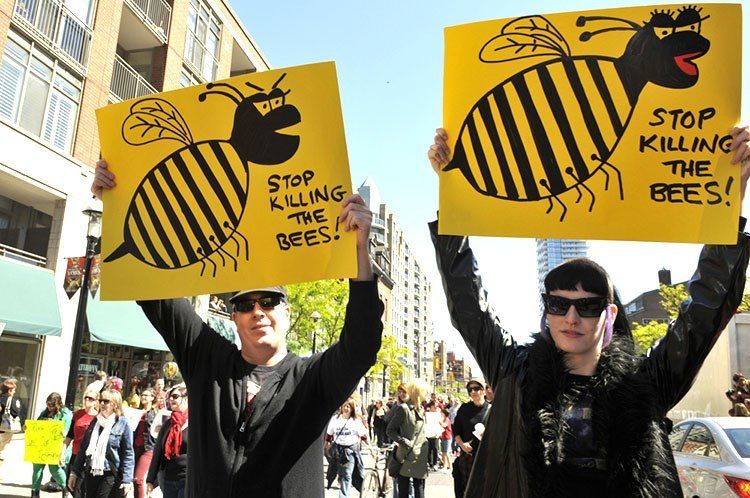
“We are still awaiting a response from EPA,” Dr. Sass told AlterNet. “So far they have neither responded to our petition or taken any final action.”
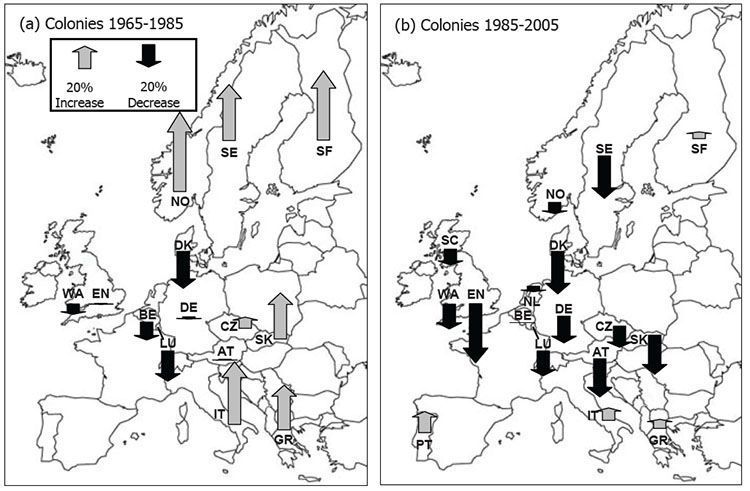
Last year, Canadian beekeepers filed a class action lawsuit against pesticide giants Bayer and Syngenta, seeking $400 million in damages. The plaintiffs claim that the firms “were negligent in their design and development of the neonicotinoid pesticides.” A 2013 study by Health Canada, the government health agency, detected the pesticides in 70 percent of dead bees.
Beeline to Right-Wing Money
The agrochemical industry has poured millions of dollars into passing laws and managing public perception. In 2013, Bayer, the primary manufacturer of imidacloprid, spent nearly $5 million lobbying the U.S. federal government on a variety of legislative and regulatory matters impacting the food, pharmaceutical and biotech industries—including bee health and EPA regulatory actions regarding pollinator protection. In the same year, the German corporation BASF, the world’s largest chemical producer, which holds the patent rights for producing and selling fipronil, spent $2.26 million lobbying the U.S. government, including efforts to make S. 1009, Modernization of the Toxic Substances Control Act, a bill regarding the EPA’s regulation of chemicals, more industry-friendly. Bayer has also been fighting efforts to place a moratorium on neonics in the EU. “Bayer Group has been shown up as a corporate bully, trying to silence campaigners who are standing up for bees,” said Friends of the Earth, an environmental nonprofit.
In addition to lobbying lawmakers and bullying activists, corporate interests are funding a propaganda machine that is working to discredit the science connecting neonics to bee deaths—the same machine that is propping up the pro-GMO, pro-pesticide agenda of Monsanto, Bayer, Syngenta and the other big players in the agrochemical industry. One of the most active cogs in this machine is the nonprofit Genetic Literacy Project (GLP), a GMO industry front group that is housed at the Statistical Assessment Service (STATS) program at George Mason University (GMU). According to Sourcewatch, “It seems that with the affiliation of the group with this right-wing university, significant work and output is being financially supported by GMU,” whose major funders include ExxonMobil, the Charles G. Koch Charitable Foundation and the Searle Freedom Trust.
According to the STATS website, it is “funded by a grant from the Searle Freedom Trust and does not accept industry funding or support.” The Searle Freedom Trust is a conservative private foundation funded up by the inherited wealth of the pharmaceutical giant G.D. Searle & Co., now a part of Pfizer. Searle funds a wide range of conservative think tanks, including Americans for Prosperity, the American Legislative Exchange Council (ALEC) and the Heartland Institute. Daniel Searle, the founder of G.D. Searle & Co., was the largest funder of the right-wing think tank the American Enterprise Institute.
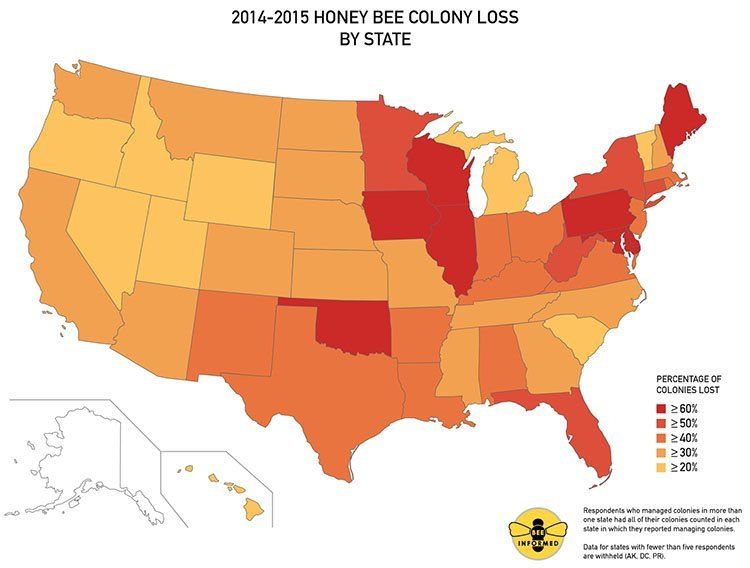
In March, GLP founder Jon Entine wrote a vigorous defense of neonics, which was posted on the GLP website. As one commenter mentioned, Entine “grossly misrepresents” the findings of a USDA study he mentions in his piece. In addition, he points to stable colony populations in the U.S. but fails to mention that American beekeepers have been importing bees from Australia to maintain their colony numbers. He may dupe a casual reader, but to followers of the biotech propaganda machine, this attempt to deceive the public about the harsh reality of neonics should come as no surprise.
“Jon Entine has professional ties to Monsanto, the Bill and Melinda Gates Foundation, Proctor & Gamble and other similar corporations,” writes Mike Adams, the founding editor of Natural News, a health news website. Adams goes on:
“Entine is a key ‘attack operative’ for the biotech industry, well known for authoring wildly defamatory character assassination articles to target GMO skeptics and scientists who disagree with the biotech industry’s contrived safety claims. With the help of Forbes.com and the American Enterprise Institute—both key players in attacking and smearing GMO skeptics and scientists—Entine has been instrumental in viciously smearing the reputations of numerous scientists, activists, independent journalists and environmentalists, usually through the use of wildly fraudulent smear tactics and the wholesale fabrication of false ‘facts’.”
Complex Clash
The biotech industry, however, has tried to shift the battle over bees and pesticides away from the arena of public relations and frame it as a political issue. “It’s more a clash of ideologies than PR,” said Luke Gibbs, head of corporate affairs for northern Europe at Syngenta, the world’s largest agrochemicals company and a leading producer of neonicotinoids. “[Bee decline is] a complicated, multifactorial issue. But it’s become so polarized and politicized that it unfortunately prevents us working together, when it could be very mutually beneficial.”
Environmentalists, food safety advocates and agribusiness working together? It may seem far-fetched, but considering the fact that the food system isn’t going to be wrenched from corporate control any time soon, it may be an avenue worth exploring. “Both extremes are complete nonsense,” said conservation biologist Dave Goulson from the University of Sussex. “The science is pretty convincing that neonicotinoids are contributing to bees’ decline, but it’s by no means the worst factor. Most scientists agree it’s habitat loss that is the single biggest driver, with disease and pesticides contributing. Obviously, any pesticide is damaging to wildlife; it’s about finding the right balance between productivity and environmental impact.”
“The greens and beekeepers probably have an argument,” said John Haynes, the manager of a 3,000-acre farm on the border of Essex and Hertfordshire counties in southeast England who supports the use of neonics. “But if you want oil seed rape to be grown in this country rather than imported, we need a more intelligent approach to neonicotinoids than a total ban.”
The bee decline is more complex than simply pinning the blame on one class of pesticides. A three-year study by the University of Maryland published in the peer-reviewed journal PLOS ONE in March found that the neonic imidacloprid is “unlikely a sole cause of colony declines” in the U.S. over the past decade. The researchers did find that the pesticide is harmful to bees: Infestations of Varroa mites were significantly higher in exposed colonies. In addition, bees avoided honey stores that were contaminated with imidacloprid, leading to malnutrition. Still, the big takeaway from the study is that neonicontinoids are bad for bees.
Fear of Free
Perhaps there is no need to find a “right balance” when it comes to neonics simply because they may not even be necessary. One of the arguments of the agrochemical industry is that there are no alternatives to neonics. That is simply not true. It’s just that many of the alternatives do not enrich corporate coffers. On their Save the Honey Bees website, the Pesticide Action Network, an international coalition of NGOs, citizens’ groups and individuals fighting pesticide use in around 60 countries, recounts an important story that farmers who are under the false assumption there are no options should note:
“In 2008, when Italy discussed a possible banning of the use of seed coating on maize because of the spectacular honeybee colony losses, the industry made an impressive media campaign on the lack of alternatives to fight the Western Corn Rootworm and the economic damages such a decision would make: tens of millions of euros for farmers. After 4 years of maize harvest without neonicotinoids, no dropdown in maize production could be observed and an ancestral, simple and free technique replaced costly neonicotinoids: crop rotation. Such a technique can efficiently replace neonicotinoids for many plant predators.”
One word in that story strikes fear in the hearts of agrochemical executives and their propagandist minions: free. They have a lot to lose if farmers turn to alternatives. (For a list of more sustainable alternatives to specific neonics, click here). According to Statista.com, the worldwide agrochemical market generated $203.6 billion in 2013 and is on target to generate more than $242 billion in revenue by 2018. In 2012, insecticides and seed treatments (mostly neonic-based) comprised about 30 percent of Bayer CropScience’s revenues and more than six percent of Bayer’s overall sales.
There is also a growing body of evidence that questions the benefit of neonics. A study conducted by Michigan State University and published earlier this year in the Journal of Economic Entomology examined the relationship between western bean cutworm infestation and damage in dry beans. Looking at the use of seeds treated with the neonicotinoid thiamethoxam and soil treated with the systemic insecticide aldicarb, the researchers concluded that neither pesticide reduced cutworm damage. In fact, untreated plots had a lesser percentage of defects compared to treated plots, which were eaten by pests, which the researchers believe encountered fewer natural predators in the untreated plots.
Unsung and Unpaid
Bees are facing fights on multiple fronts. And their job is thankless. Not only do they have to contend with deadly parasites, pathogens, pesticides and propaganda, they aren’t even rewarded for all their labor. “You can thank the Apis Mellifera, better known as the Western honeybee, for 1 in every 3 mouthfuls of food you’ll eat today,” writes Bryan Walsh, TIME‘s foreign editor who has covered environmental issues for the magazine. “From the almond orchards of central California—where each spring billions of honeybees from across the U.S. arrive to pollinate a multibillion-dollar crop—to the blueberry bogs of Maine, the bees are the unsung, unpaid laborers of the American agricultural system, adding more than $15 billion in value to farming each year.”
Pavan Sukhdev, an environmental economist who was appointed a Goodwill Ambassador in 2012 by the United Nations Environment Programme (UNEP) for his work promoting the green economy, argues that we don’t value the contribution of bees because that value hasn’t been monetized. “Not a single bee has ever sent you an invoice,” Sukhdev writes in the United Nations report “The Economics of Ecosystems and Biodiversity.” “And that is part of the problem—because most of what comes to us from nature is free, because it is not invoiced, because it is not priced, because it is not traded in markets, we tend to ignore it.”
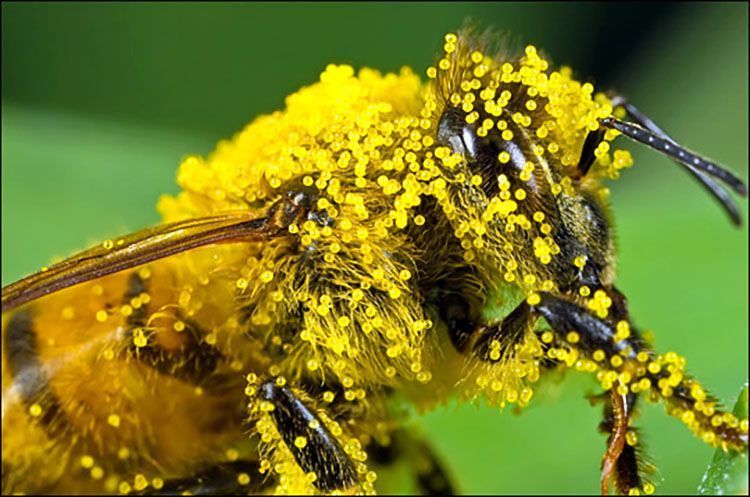
Even beyond putting a price tag on bees’ work output, we should look to them as a model to emulate. “If you think about it, the honeybee beehive is the perfect paradigm for the ultimate food service industry,” said Dr. Halter, the bee expert. “It begins before sunup. It closes shop after sundown. There is zero unemployment. And the bees are able to change their order of operations within a matter of minutes.”
“The way humanity manages or mismanages its nature-based assets, including pollinators, will in part define our collective future in the 21st century,” said Achim Steiner, UNEP’s executive director. “The fact is that of the 100 crop species that provide 90 percent of the world’s food, more than 70 are pollinated by bees.”
As the English poet William Blake observed in Proverbs of Hell, “The busy bee has no time for sorrow.” And until we start to truly value the service they provide to us and nature as a whole, soon bees may have no time left for anything at all. And all the sorrow will be ours.

 233k
233k  41k
41k  Subscribe
Subscribe 